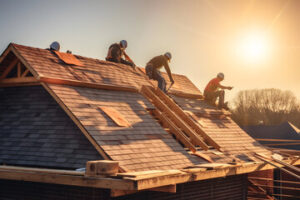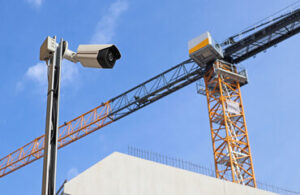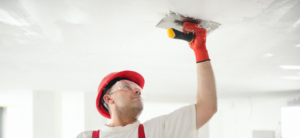Pests adapt to weather conditions, so your pest control needs change with the seasons. A good Integrated Pest Management program includes regular Olathe Pest Control services throughout the year.
Keeping up with seasonal pests helps you minimize infestations and prevent new problems from developing. Proper sanitation, regular inspections, and removing attractants are important prevention tips.

Spring
Spring brings pests out of their winter dormancy and they are looking for food, water, shelter, and breeding sites. They can cause a variety of damage to property structures, household belongings, and human health. Visual sightings of pests, such as ant trails on countertops, mosquitoes hovering near stagnant water, or termite swarmers emerging from the foundation are early warning signs and should be addressed promptly. Other signs of pest activity include chewed wires, gnaw marks on wood surfaces, and shredded paper or fabric materials.
Keeping pests out starts with creating an unwelcoming environment for them to live in. Homeowners can minimize their risk of a spring pest infestation by following these preventive steps:
Seal Entry Points
As snow melts and foundations shift, new gaps, cracks, and holes can appear around the edges of your house or business. It is a good idea to inspect these areas every spring and repair them with caulk or other appropriate sealants. It is also important to keep all doors and windows tightly closed and to screen chimneys and vents.
Remove Standing Water
Mosquitoes and termites breed near sources of standing water, which also provide ideal hiding places for other pests like flies. Eliminate these potential breeding sources by regularly emptying bird baths, reducing the number of flower pots or planters you have in your yard, and clearing debris that could hold standing water. Regularly cleaning and repairing gutters and preventing them from becoming clogged with leaves can also help reduce the risk of these pests around your home.
Ticks are a common problem in the spring and can cause serious diseases such as Lyme disease, as well as allergic reactions like alpha-gal syndrome. To minimize tick populations, trim shrubs, and bushes often, remove tall grasses and leaf debris from the lawn, and treat your pets with a monthly tick preventative.
Plunkett’s pest control experts can help with all of these preventive measures. Contact us today to schedule a spring inspection of your home or business and to discuss your pest control needs for the season ahead.
Summer
With warmer weather comes a return to outdoor activities like barbecues, gardening, and beach trips. However, pests also take advantage of the longer days and warm temperatures to increase their activity levels, posing both health risks and property damage.
Insects, ants, flies, roaches, and even earwigs are more active in the summer than any other season because it is their reproductive time of year. Additionally, warmer weather often brings heavy rains, which can reactivate pest populations that had previously gone dormant in cooler temperatures.
As humidity and moisture levels increase during the summer, pests become more active as they seek out shelter. This can include secluded corners, cracks in foundations, and spaces around doors and windows. These moist areas are also ideal places for pests to breed and lay eggs.
Mosquitoes, flies, and ants can pose serious health risks when they invade homes and businesses. These pests can carry bacteria, parasites, and diseases that are harmful to human beings. They can also cause significant damage to a home or business by chewing on wires and other materials.
Stinging pests, such as wasps and hornets, can also be a nuisance in the summer. They can build nests in the eaves, on trees, and in shrubbery, making it difficult to enjoy outdoor gatherings without fear of stings. Additionally, wasps and hornets are known to aggressively defend their colonies against intruders.
Finally, rodents can be a problem in the summer, as they search for food and shelter during the warmer months. Rats and mice can spread disease, contaminate food, and gnaw on wires that can lead to fire hazards.
Performing pest control services during the summer can help prevent pest problems and reduce their impact on your home or business. It is important to seal all entry points into your house or business and to maintain a clean environment by regularly cleaning up spills, crumbs, and spoiled food. It is also essential to trim bushes and other foliage away from your house or business and to store foods in airtight containers. These preventive measures can help keep pests out of your living spaces and make your summer enjoyable.
Fall
The cool temperatures of fall encourage pests to seek shelter, food, and water inside homes. Rodents, cockroaches, and spiders become particularly active during this season as they prepare for winter and search out resources to sustain them through the harsher conditions. Proper pest control during the fall prevents these pests from seeking shelter in your home and reduces their impact on your health and property.
Pests can gain entry into your home through tiny cracks and crevices in the foundation, exterior walls, or around windows and doors. Store firewood several feet away from your house, keep outdoor trash in tightly sealed containers and regularly take the garbage out to prevent rodents and insects from gaining access to the contents. Keep bushes, trees, and other vegetation well-trimmed to reduce the opportunity for pests to hide under or near your home.
Inside the home, pests such as roaches and ants can enter through open windows and doors, unemptied garbage cans, or dirty dishes left out on countertops. Keep your kitchen spotless to repel pests, including washing dishes after each use, wiping up spills immediately, and not allowing food debris to build up on counters or appliances. In the yard, remove ripe or rotting fruit and vegetables, and clean up fallen leaves, shrubbery, and other debris to eliminate hiding places for pests.
Rodents and other pests can cause serious structural damage to your home, while cockroaches and spiders can pose a serious health risk. Their droppings, saliva, and shed skin can aggravate allergies and asthma, while their bites may carry dangerous pathogens like salmonella or hantavirus.
Effective fall pest control involves eliminating entry points, removing potential food sources, and conducting regular inspections to detect pest infestations early on and take immediate action. Contact a professional pest control service to protect your home from seasonal pests.
Winter
Once summer comes to close, warm temperatures and lush vegetation give way to the frosty winter months. Many homeowners assume that pests go dormant and don’t require residential pest control until spring. The reality is that cold weather drives pests indoors to find warmth, food, water, and shelter. Without the right preventative measures, these unwanted guests can become a serious problem.
Rodents, such as mice and rats, invade homes in search of safe shelter during the cold season. They can chew through insulation, wood supports, and electrical wires, leaving behind feces and droppings that pose health hazards for family members. Additionally, rodents are known to carry fleas, which can then infest your home and spread diseases.
Cockroaches are also a common winter pest, as they prefer to hide in warm places with high moisture levels. They can wreak havoc on kitchens, basements, and attics by consuming drywall and flooring materials, causing structural damage.
Stink bugs, Asian ladybugs, cluster flies, and boxelder bugs also invade homes in search of food or shelter during the winter. Stink bugs are a particular nuisance, emitting a foul odor when disturbed. These insects also cause structural damage, eating through shingles and roof flashing.
Pest control services can provide you with a variety of preventative measures to help keep pests out all year round. These include storing food in airtight containers, cleaning hard-to-reach spots regularly, and keeping garbage bins tightly closed. Plumbing maintenance, such as addressing leaky pipes and drains, can also help to deter pests.
In addition, you can use door sweeps and screen doors to block pests from entering through cracks or gaps. Finally, you can clear away piles of wood and debris, as they can provide hiding spaces for pests. Taking the right steps can help to ensure that your home is protected throughout the year and you can enjoy your time at home with family and friends. It’s never too late to contact a professional about pest prevention services. The peace of mind provided by these services is invaluable.








